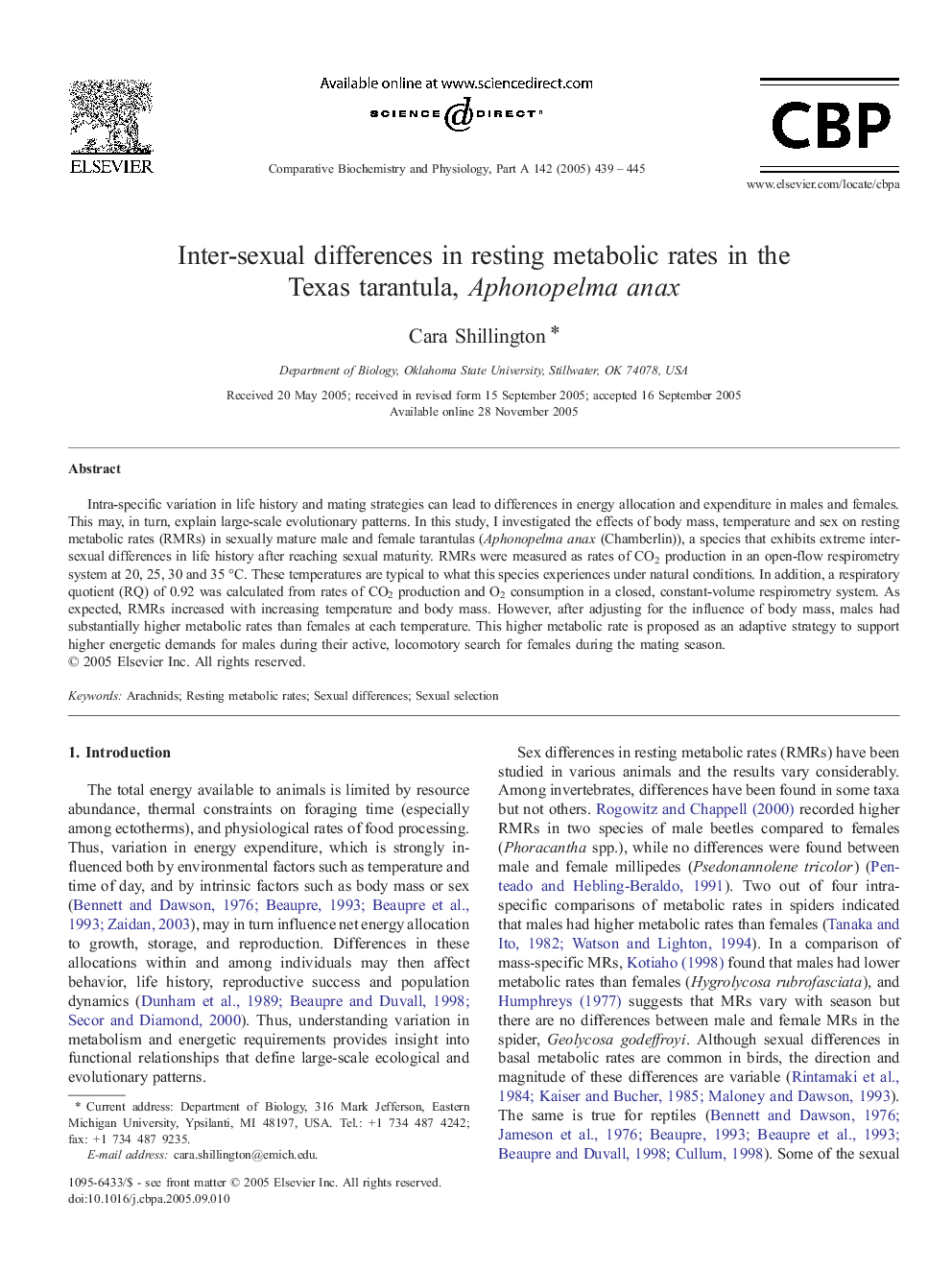| Article ID | Journal | Published Year | Pages | File Type |
|---|---|---|---|---|
| 10819047 | Comparative Biochemistry and Physiology Part A: Molecular & Integrative Physiology | 2005 | 7 Pages |
Abstract
Intra-specific variation in life history and mating strategies can lead to differences in energy allocation and expenditure in males and females. This may, in turn, explain large-scale evolutionary patterns. In this study, I investigated the effects of body mass, temperature and sex on resting metabolic rates (RMRs) in sexually mature male and female tarantulas (Aphonopelma anax (Chamberlin)), a species that exhibits extreme inter-sexual differences in life history after reaching sexual maturity. RMRs were measured as rates of CO2 production in an open-flow respirometry system at 20, 25, 30 and 35 °C. These temperatures are typical to what this species experiences under natural conditions. In addition, a respiratory quotient (RQ) of 0.92 was calculated from rates of CO2 production and O2 consumption in a closed, constant-volume respirometry system. As expected, RMRs increased with increasing temperature and body mass. However, after adjusting for the influence of body mass, males had substantially higher metabolic rates than females at each temperature. This higher metabolic rate is proposed as an adaptive strategy to support higher energetic demands for males during their active, locomotory search for females during the mating season.
Related Topics
Life Sciences
Biochemistry, Genetics and Molecular Biology
Biochemistry
Authors
Cara Shillington,
